3. The Making of a Comic: 'Dead Dreams' with Dailen Ogden
Sequentials, colors, and a cover reveal, oh my!

Howdy Brave Being,
Welcome back! For this week’s The Making of a Comic series, I’m chatting with artist Dailen Ogden and pulling back the curtain on a comic we hope to release later this year—one that I will return to in this series because it and my collaborators truly taught me so much. So, drum roll please. I give you…
DEAD DREAMS: THE LUCID CHRONICLES #1, a YA sci-fi thriller that’s Fringe meets Orphan Black:
Timid Piña Axletree faces mad scientists and a drug syndicate after she wakes up in the body of her doppelgänger. Will she become this ruthless version of herself or suffer the wrath of the sadistic syndicate?
That’s the pitch. It’s a weird and wonderful story, and sometimes I can’t believe that I wrote it. The DEAD DREAMS dream team includes artist Dailen Ogden (THE LIMINAL), letterer Gabriela Downie (HELM GREYCASTLE), editor Heather Ayres (SPITTING IMAGE), designer Sasha E. Head (DECORUM), and flatter Drew Wills (24 PANELS).
Now, onto today’s featured creator:
Dailen Ogden
Artist of the webcomic THE LIMINAL, Dailen Ogden was actually the 6th artist that I asked to join me on this comic. I met Dailen at Emerald City Comic Con in 2019 and found their bubbly energy and excitement over comics magnetic. At that point, they had drawn and colored Riley Biehl’s MIRANDA IN THE MAELSTROM #2, part of the miniseries that I edited. I just adored their work on it and so I thought, why not ask if they’d like to make comics with me!? Dailen said yes and the rest is history—a history of 173 emails later, haha! What can I say, comics is also communication.
Before I get ahead of myself, I should mention that the first artist I worked with on DEAD DREAMS was Hari Conner who did a handful of pitch pages, a cover, and character designs, but they couldn’t continue on as the series artist. I was super sad to lose Hari as I loved their work. But I kept going with the Galaxy Quest catch phrase stuck in my mind, “Never give up, never surrender!” Dailen picked up where Hari left off, tackling the whole first issue, including a new cover, the art, and the colors. Dailen also brought Flatter Drew Wills onto the team, which pretty much brings us up to now. Let’s hop to it!
Cover Process
Brittany Matter: Tell us a little bit about the cover for DEAD DREAMS: THE LUCID CHRONICLES #1.
Dailen Ogden: This cover was such a fun one for me to do! Piña having a doppelgänger opened up so many possibilities for visuals that reflected the dual universes of the book, and the distinctly different vibes between them. I loved getting to explore a composition that made sense from right-side-up and upside-down, and to hint at the sinister differences between the two versions of the same woman.
BM: What's your go-to first step in cover creation?
DO: This answer sounds a little silly, but for any cover I do the first step is to read the script of the accompanying issue and just . . . think about it for a while. Before I ever pick up my stylus or pen, I ask myself: who is the main character of this book? What is the overarching tone? Are there objects and symbols in the text that I can reference? What do I want to show the reader, to tease them and hook them into what’s inside? I start sketching once I have the chance to answer at least a couple of those questions.
BM: What do you think makes a good cover?
DO: I think that’s a big question that has a broad answer. Covers can be so many things; they can be extremely crowded and complex, or sharp and simple, and both of those strategies can be really effective. I think the only real requirement is that they capture the mood of the book inside. Does the cover evoke the feeling that you want people to have as they read? At a glance, do they already have a kind of subconscious idea of what they’re getting into? If the answer is yes, I think that’s the best way to entice the kinds of readers that will enjoy your book the most—the ones who are looking for that feeling.
BM: What is it that you think most people don't know about illustrating a cover?
DO: It’s both way easier and way harder than illustrating the interior pages, haha! It ends up being a lot less physical labor, but the pressure feels immense. It’s the first impression you’re making on every person who sees it, and you don’t want to screw it up.
Sequentials
BM: When it comes to drawing sequential art from a script, how do you approach the layout process?
DO: This is actually the part of the process that’s the most difficult for me—turning a blank page into something resembling a story. Most of what I know I’ve picked up just from reading other comics and paying attention to how other artists handle their layouts, but it’s an inexact science that varies from page to page and book to book, depending on what you’re trying to accomplish.
For the most part, I try to adhere to what a writer has set out for me, but sometimes it’s fun to get a little freeform. One of the things that comics is great for is playing with the way the page itself can help tell the story, instead of just the visuals within the panel bounds. The rhythm of the boxes, the shape of the gutters (those are the spaces between the panels), and the page behind the sequentials can all do their part! A good example of this is page 17, with Piña walking down the stairs. The panels follow the steps so that they, too, feel like a staircase of sorts. And as she descends the background gets more cave-like, helping us understand that she’s going underground, hinting at the reveal to come.
BM: What's one thing you've learned from drawing sequential art that only it could teach you?
DO: Timing, for sure. Comics are great to teach you the fundamentals of everything: backgrounds, hands, everyday objects, consistent faces and recognizable characters. But those are things you can learn just from practice, too. The only place that you can learn sequential timing is through sequential art. How long does a moment take? Where is the focus? How do you use panels to speed up or slow down a story, depending on what the pacing calls for? It’s a specific mindset that’s analogous to movies or storyboarding, but still not exactly the same.
Color Process
BM: Since you picked up DEAD DREAMS following artist Hari Conner, how did you make it your own?
DO: When you compare the pages they did with the ones I did, it’s clear they’re very different. But I think that’s inevitable, just by virtue of the fact that I’m a different person with my own set of hands and habits. I actually tried to be faithful to Hari’s vision wherever I could; they did too beautiful of a job just to let it all go to waste! I know that’s kind of a vague answer, but personal style is kind of like personal body odor, I think: everyone is aware of it but you.
“…personal style is kind of like personal body odor, I think: everyone is aware of it but you.”
BM: How did you approach coloring the two worlds and the characters?
DO: First and foremost, I wanted them to be visually distinct from each other. Hari already set out a fabulous color palette for the first world, and those teal and blue tones made for an awesome and distinct atmosphere. From there, it was just a matter of choosing a contrast—the second world is colored with primarily siennas, golds, and oranges, a kind of sepia tone that also helps sell the steampunk historical vibe. I wanted to make sure readers could always tell at a glance which world they were in, even (and especially) when it switches on a single page.
BM: Tell us how you work with Flatter Drew Wills.
DO: Drew is an extremely valuable part of the process—for those not in the know, flatting is a step in the digital coloring process wherein a flatter pre-fills everything with random colors, making things easy to select and colorize later without having to manually select every space by hand, over and over. For example, if I give Drew a page with five panels in it, he might make the main character’s hair the same shade of green in every panel. Then when I’m ready to color, I can select that shade of green and voila! I’ve just selected every instance of the character’s hair on the page, and I can color them the proper shade, all at once.
His work saves me a lot of time doing it myself, and I can’t possibly overstate how much I appreciate that. Drew has been my long-standing collaborator on nearly all of my comics projects, and he has a keen eye for what I need in my work, including separating out things that I’ve missed!
BM: What's your favorite thing about the coloring process?
DO: My favorite thing about coloring is that moment where things just click. For me, the process is very intuitive, and I spend a lot of time goofing around with color before I finally land on a place where I feel like the proper mood and tone have been captured. Sometimes coloring can be frustrating for that reason, and I’ll spend a lot of time on a scheme that isn’t compelling me the way I want it to. But when it finally does work, I just know. And that moment is always pretty special.
Getting to know Dailen
BM: What's the best part about making comics?
DO: I think the best part about making comics is the community you build—both from collaborators, and readers. There’s such a palpable excitement when you tell someone a story, and when you watch it unfold in front of them. It’s amazing to make lifelong friends while you work, and to watch strangers fall in love with characters and worlds that you’ve built. Humans have been doing this for as long as we’ve existed, and never for a moment has the art of storytelling lost its magic. For all of the problems the industry has, love and passion for the medium has never been one of them.
Humans have been doing this for as long as we’ve existed, and never for a moment has the art of storytelling lost its magic.
BM: Tell us about your favorite original character (OC)?
DO: Ahhh, this question is like trying to make me pick between my children! I don’t know if I can talk about a favorite, but the main character of my webcomic is such a joy to write, and I’m so excited to share her with the world. Taylor’s a golden retriever in human skin, ham-headed and full of love, with the best intentions. She’s the simple, beating heart at the center of a very complex world, and exploring the ways that she engages with conflict is pretty delightful!
I won’t write you a novel about her, but I definitely could, haha! Nothing gets me talking quite like original characters, because I’ve put a ton into all of mine.
BM: What are you working on right now?
DO: I’m currently working on a one-off graphic novella, called Wifwulf! Wifwulf is a fairytale horror about a young woman who throws herself to the wolves to escape an abusive marriage. It’s dark, and heavy, and visceral . . . but also hopeful? Keep an eye out for it this fall. For anyone who’s a fan of my personal work, this comic is right in line with it and bound to please anyone who loves the way I draw wolves.
Like The Liminal, it’s a personal project that was languishing on the back burner for years while I hustled to make ends meet drawing comics. Now that I have some other supplemental income, I’ve put all my focus into finishing my own projects, which means that when Wifwulf wraps I’ll be returning to The Liminal, too!
BM: Looking forward to seeing more of both, Dailen! Check out Dailen’s work here and follow their wonderful musings (and posts about their doggo) on Twitter.
Stay tuned for more previews of DEAD DREAMS and interviews with the team, and feel free to comment on this post. I’d love to hear from ya!

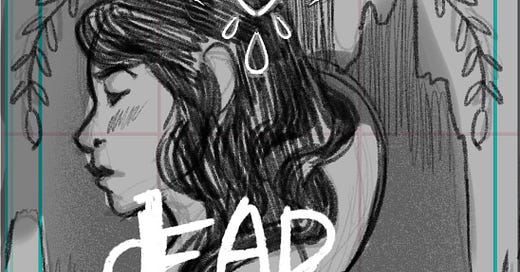


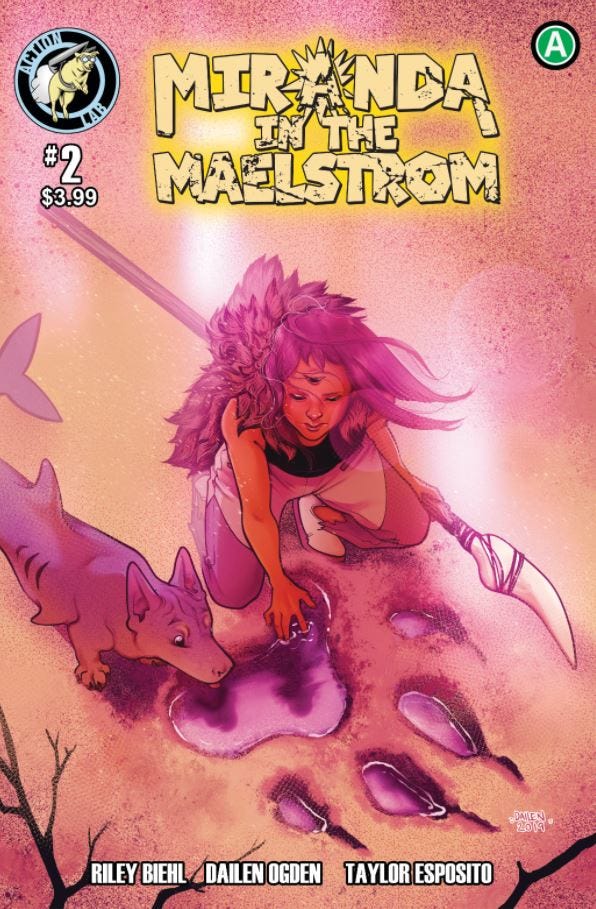
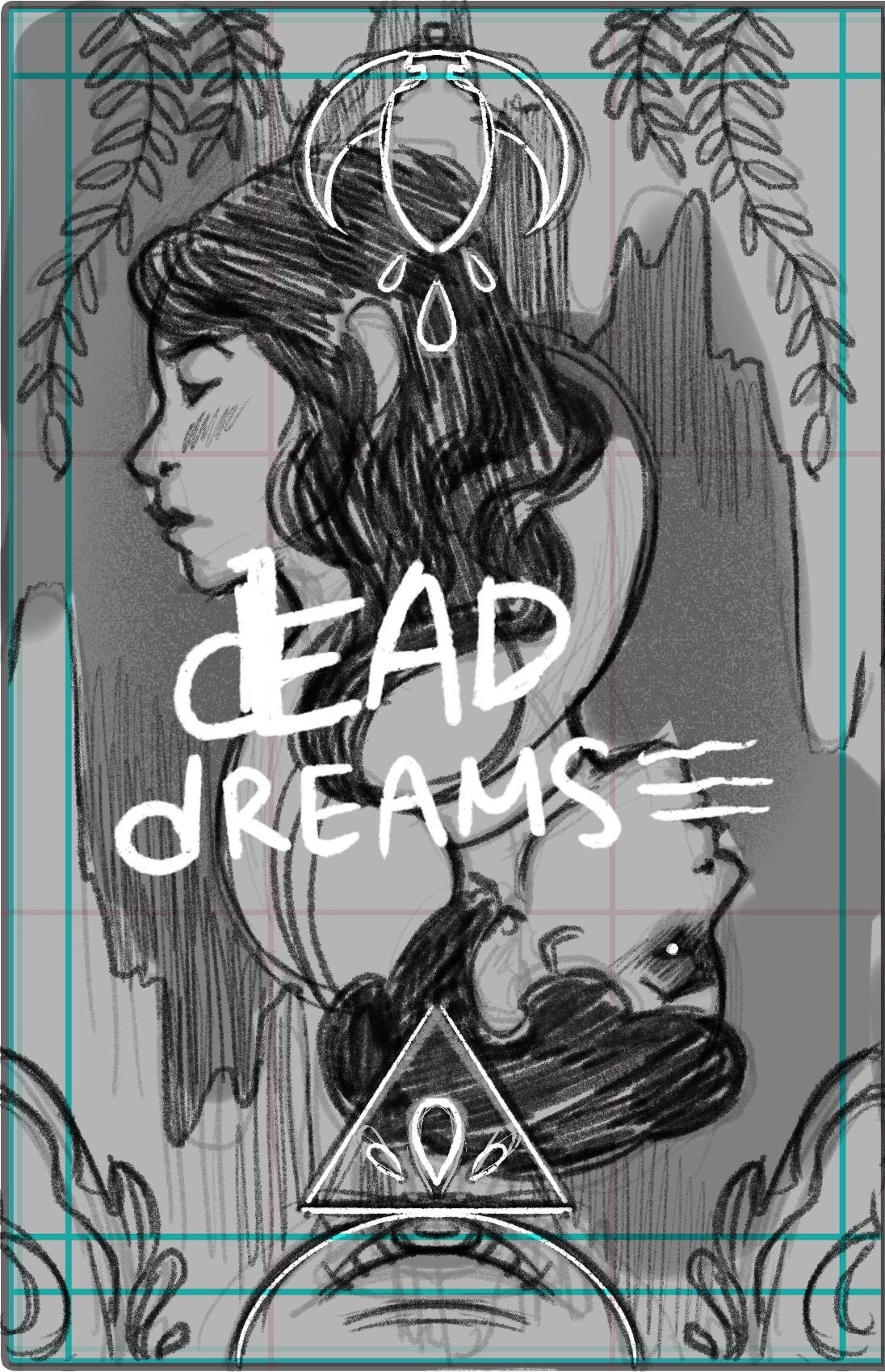
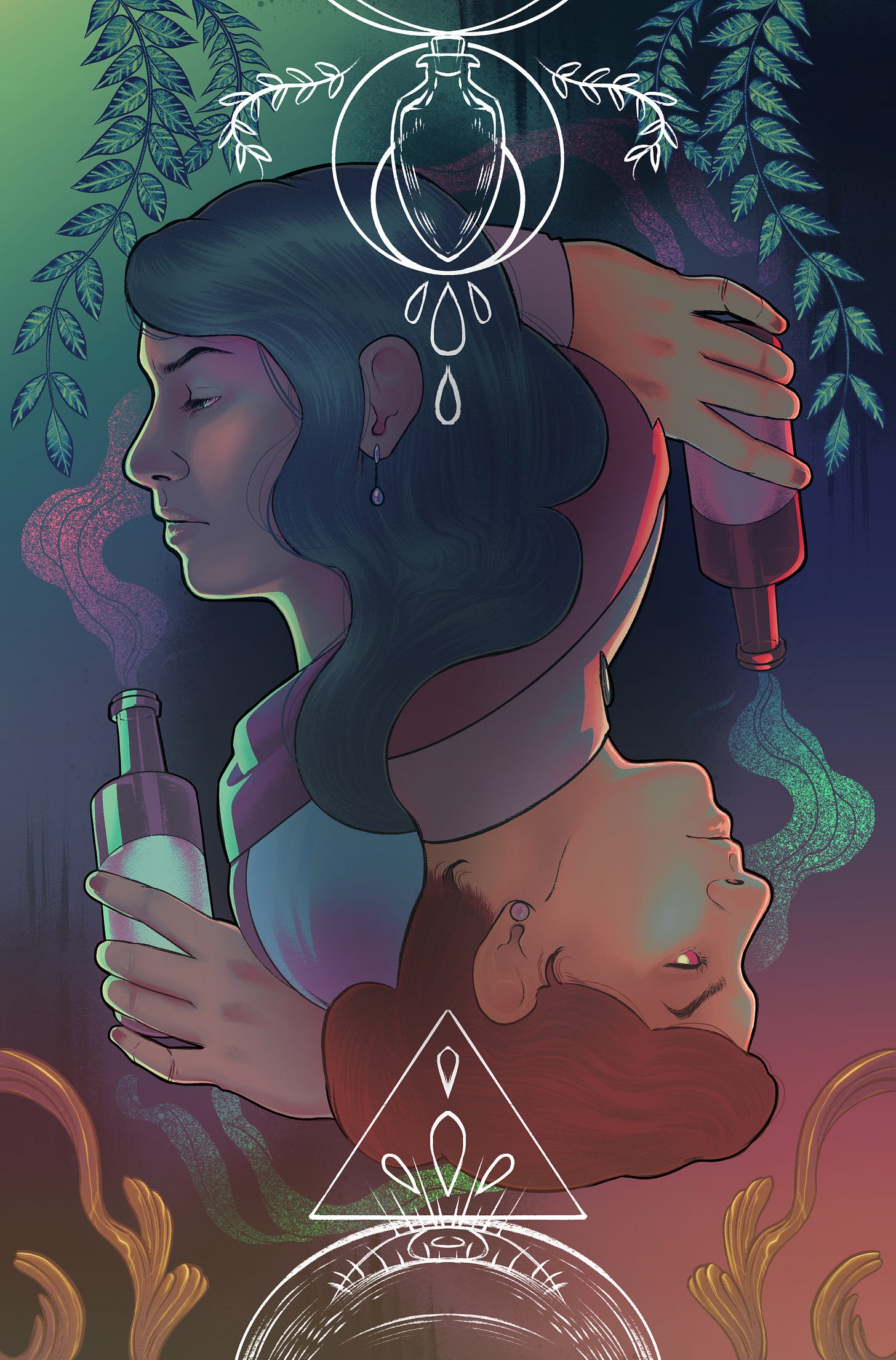

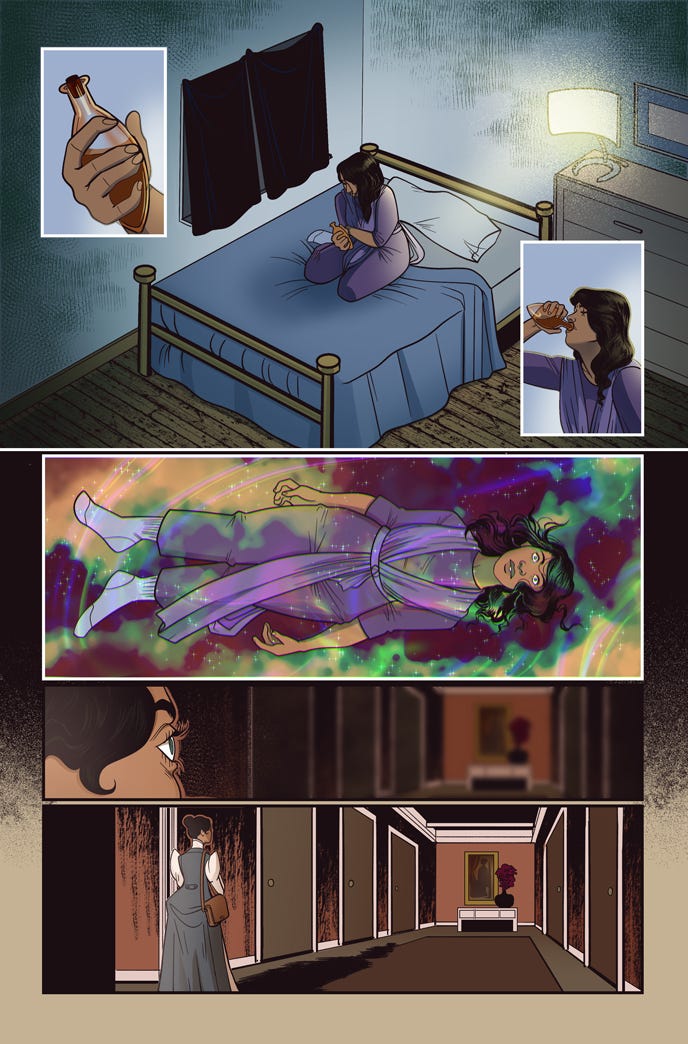
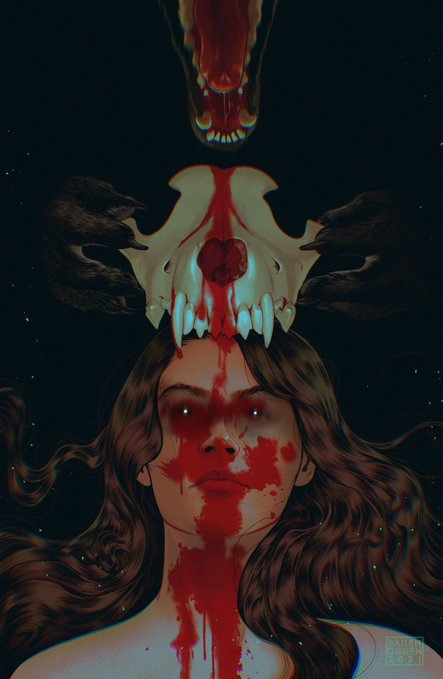
Really great work, Brittany! Amazing, creative and very talented people you’ve introduced us to. Bravo to all of you!